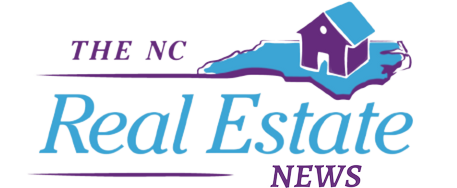Discover what truly matters to tenants by hearing directly from the source. At VTS Accelerate 2024, we had an exclusive opportunity to engage with top executives about their leasing preferences.
Brendan Wallace, CEO and Chief Investment Officer at Fifth Wall, led the “What Tenants Want” panel featuring insights from:
- Neil Vogel, Chief Executive Officer of Dotdash Meredith
- Melissa Myers, Head of Global Workplace and Safety at Okta
- Shannon Loew, VP of Worldwide Corporate Real Estate and Facilities at Amazon
If you didn’t get to see this panel, we grabbed the key takeaways from their discussion.
Hybrid work is here to stay
The return-to-office strategy remains a hot topic. According to a recent study conducted by VTS, 62% of companies are executing a hybrid work strategy, while only 1% have gone fully remote.
Dotdash Meredith mandates a three-day-a-week office attendance, emphasizing the necessity of physical presence for creative collaboration. Neil Vogel shared their approach, saying, “We are back fairly early. Part of it is cultural . . . when you create media, you need to be together.”
Melissa Myers of Okta highlighted a similar hybrid strategy that works for their diverse workforce. “About 60% of our employee base is not within a commutable distance of an office. So we have a mix of remote work, hybrid work, and some that are in-office all the time,” she explained. This mix allows Okta to cater to various employee needs while maintaining a cohesive work environment.
Safety and security are top priorities
Safety and security in the workplace have become paramount, with 87% of company leaders emphasizing their importance.
Myers, with her background in psychology, underscored the need for a safe environment as foundational for productivity and innovation. “People need to know that they’re safe first, especially post-COVID,” she said. And meeting basic human needs is essential before you can address higher-level concerns like strategic thinking and innovation. “If I’m safe, I’m secure, the building’s warm, it’s cool, I can get food, there’s water, easy access to bathrooms . . . Once those are met, then you can get to, ‘how do you go solve some of the big problems?’”
Shannon Loew from Amazon echoed this sentiment, stating that safety is “table stakes” and a fundamental requirement. Amazon’s extensive portfolio, which spans 68 countries and houses approximately 325,000 employees, necessitates rigorous safety and security measures to ensure a conducive work environment.
Technology plays a big role in access and engagement
Technology integration is revolutionizing tenant experience in the workplace. The panel discussed the growing demand for mobile access and integrated communication systems. Statistics show that 53% of company leaders want mobile access to unlock spaces, and 92% of tenant leaders desire a singular app for accessing various spaces.
Meyers mentioned making building access as simple as possible. “We think about our space as, ‘how do I create an ease of use and an ease of access?’ I can’t change your commute. I can’t change that you’ve got to get your kids ready . . . But once you get there, can I create an ease of use that allows you to get into the building safely, securely, and easily?” This focus on user-friendly technology is one big way to improve tenant experience.
Office spaces can help create connections and communities
A significant challenge in the post-COVID world is fostering a sense of connection and community within the office.
Vogel emphasized the importance of a synergetic office space. He said, “We have to provide a workplace that is collaborative and energetic and awesome and fun,” he stated. “Young people want to be in the office, particularly in New York, LA, even Des Moines, Iowa, and Birmingham. That’s how you make your friends. That’s how you connect.” Clearly, there’s a need for an engaging office environment that employees are eager to return to.
Myers added that connection is crucial to getting employees on board with coming into work. “Can we create spaces where you can do your best work? Can we create ways for you to have meaningful connection? And if we can do that, then it becomes worth it,” she explained. She also said, “The more connected you feel to your coworkers and your workspace, the more open you’ll be in exploring ideas and innovation.”
Okta’s strategy focuses on really getting to know what employees need. This helps them design offices that make the best use of space and create a strong sense of community and belonging.
Sustainability and ESG drive corporate strategies
Environmental, social, and governance (ESG) considerations are increasingly shaping corporate real estate strategies. Loew highlighted Amazon’s commitment to sustainability, aiming for net zero carbon emissions by 2040. Sustainability initiatives include submetering, real-time data access, and adaptive reuse of buildings to reduce carbon footprints. “[The adaptive reuse of the Lord Taylor Building] had a really big attraction to our employees. Sentiment return on that was really clear and very positive. We’re proud of that.”
And the small efforts matter, too. Vogel noted the importance of aligning with these values. “Our employees are very, very concerned. One of the great days in the history of Dotdash Meredith was when we were able to get straws that everybody was happy with,” he remarked.
Myers mentioned gamification as Okta’s approach to melding sustainability efforts with employee engagement, but there are certain must-haves when working with property partners. “We need to know that buildings are LEED and well-certified, and we can say that to our employees, but also they want to know we’re going beyond what’s required, and they want to see us lead in that and give them opportunities to contribute as well – as long as it’s not a paper straw,” she said.
Data-driven decision-making is key to optimizing spaces
Leveraging data for decision-making is critical to optimize office spaces and improve the tenant experience. Myers shared how Okta relies on data to understand space utilization and employee needs. “It’s not just about knowing how many people are in the building, but about understanding the specifics of their needs and behaviors . . . We use sensor data to see which areas are most popular, and we conduct surveys to gather qualitative insights on why certain spaces resonate more than others.”
But the quantitative data doesn’t always tell the whole story. Loew pointed out that anecdotal evidence often provides context that raw data might miss. “We empower our employees to speak their minds. . . And we often get that there are not enough desks. We know, based on occupancy and desk supply, that there should be ample desks. But we’re hearing from those anecdotes that that’s not the case,” he explained.
Loew highlighted the need to dig deeper into qualitative feedback to understand true usage patterns and preferences. “[With] anecdotal-based research, you just start to see what the preferences are for where people want to sit. And you start to understand that teams are not necessarily as you define them on paper,” he said. This deeper understanding allows Amazon to better tailor their spaces to meet employee needs.
From Vogel’s perspective, the data tells a simple story: “We sell more ads when we’re in the office. We produce more and better content – these are nondebatable facts.” In short, when his company works together in person, revenue grows – and that’s the bottom line.
Meeting tenant expectations for the future
The VTS Accelerate 2024 panel delivered a treasure trove of insights on what tenants crave in modern office spaces. By embracing trends around sustainability, adaptability, and connection, property partners can help companies design thoughtful workplaces that draw employees in and supercharge productivity. These insights are your blueprint for the future of office design and management.
See our full Accelerate rewind here.




